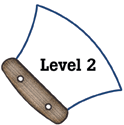
Alaska Science
Key Element A14a
A student who meets the content standard should understand the interdependence between living things and their environments (Interdependence).
 |
Alaska Science A student who meets the content standard should understand the interdependence between living things and their environments (Interdependence). |
|
Performance Standard Level 2, Ages 8–10
|
|
|
|
Sample Assessment Ideas
|
|
|
Expanded Sample Assessment Idea
|
|
Procedure Students will:
Reflection and Revision
|
Levels of Performance |
||
|
Stage 4 |
Student work is complete, and shows evidence of logical reasoning. Student correctly identifies environmental resources that provide the basic needs of the plant and animal, and predict what happens when the resources decrease. | ||
|
Stage 3
|
Student work shows evidence of logical reasoning, but may contain minor errors or omissions. Student correctly identifies environmental resources that provide the basic needs of the plant and animal, but may not predict what happens when the resources decrease. | ||
|
Stage 2
|
Student work may be incomplete, or contain errors of science fact and reasoning. Student identifies the basic needs of plants and animals, along with some environmental resources that provide those needs. | ||
|
Stage 1
|
Student work may identify some basic needs of the plant or animal, however, it is largely incomplete, contains major misconceptions. | ||
Standards Cross-References
|
||
|
National Science Education Standards All organisms must be able to obtain and use resources, grow, reproduce, and maintain stable internal conditions while living in a constantly changing external environment. (Page 157 Resources are things that we get from the living and non-living environment to meet the needs and wants of a population. (Page 140) Some resources are basic materials, such as air, water, and soil; some are produced from basic resources, such as food, fuel, and building materials; and some resources are non-material, such as quiet places, beauty, security, and safety. (Page 140) The supply of many resources is limited. If used, resources can be extended through recycling and decreased use. (Page 140) |
Benchmarks For any particular environment, some kinds of plants and animals survive well, some survive less well, and some cannot survive at all. (Page 116) Insects and various other organisms depend on dead plant material for food. (Page 116) Organisms interact with one another in various ways besides providing food. Many plants depend on animals for carrying their pollen to other plants or for dispersing their seeds. (Page 116) |
|
Table of Contents | Return to Alaska Native Knowledge Network